Can Walking Help You Lose Weight?
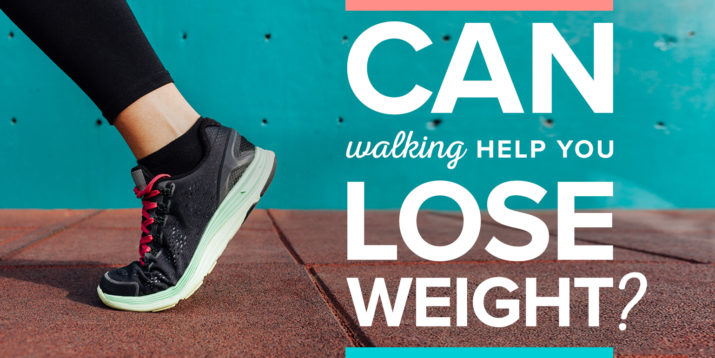
But is it the best way to lose weight? That depends on your fitness level.
If you’re overweight or just starting out, walking can be a great way to get started on your weight-loss journey.
It’s free, it’s simple, and it requires no special training or fitness prowess. It can also be enjoyable, especially if you have a chatty friend by your side or a fun podcast to listen to.
For a fit person who can tolerate higher-intensity forms of exercise, walking isn’t the most time-efficient form of exercise for burning fat.
Walking is low-intensity, repetitive, and your body recovers from it quickly — basically, it’s the opposite of high-intensity interval training.
But a fit person can still benefit from walking as a relaxing addition to a more intense exercise routine — it’s calming, it burns some calories, and it can be perfect for an active rest day.
In short, walking is awesome. Here’s what you need to know about walking and weight loss.
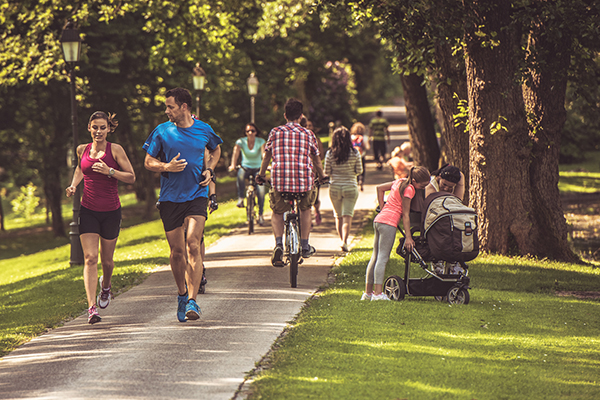
How Much Exercise Do You Need?
Even if you’re not actively trying to lose weight, you need to move often to maintain a healthy body.
According to the CDC, adults should get 150 to 300 minutes of moderate-intensity aerobic exercise per week, or 75 to 150 minutes of vigorous exercise.
Walking briskly — between 2.5 and 4.0 mph — is considered a moderate-intensity exercise.
Exercising for 150 minutes may sound daunting, but that averages out to a brisk 30-minute walk, five days per week.
You can walk up to two miles in that time maintaining a moderate pace.
If you have a busy schedule, you can also break it up into smaller chunks — like 15 minutes, twice a day, five days per week.
It all counts, as long as it adds up to the recommended amount of exercise.
The Benefits of Walking for Weight Loss
In general, the key to fat loss is to expend more calories than you consume.
What you eat is the biggest factor in that equation, but exercise — including walking — can burn additional calories and help to create a calorie deficit.
“Walking is an easy and effective way to increase your daily activity level and burn more calories if you’re overweight, sedentary, or just beginning your weight-loss journey,” says Trevor Thieme, C.S.C.S.
Here are a few of the key benefits of walking.
1. Lose weight without losing muscle
Research suggests walking regularly can help you shed fat and keep it off in the long term.
And a review of research found that endurance exercises like walking “help preserve muscle mass during weight loss.”
2. Burn calories
The precise number of calories you’ll burn through walking depends on a variety of factors, including your height, weight, pace, terrain, and genetics.
But the average 150-pound person can expect to burn around 136 calories in 30 minutes of brisk walking.
3. Improve your mood
A study on a small group of young adults found that just 10 minutes of brisk walking could have mood-enhancing benefits.
4. Get a low-impact workout
Because walking is low-impact, it’s also an ideal activity for people who are recovering from an injury and can’t dive back into high-intensity exercise right away.
How to Lose Weight by Walking
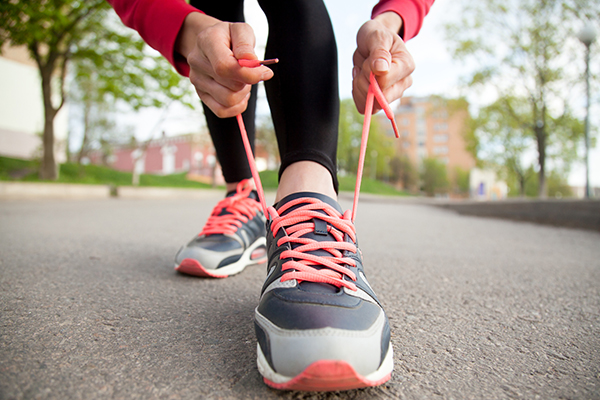
When it comes to weight loss, Thieme says, nutrition is key — but you’ll see results even faster if you combine healthy eating with regular exercise, like walking.
“Cleaning up your diet should always be your top priority if your goal is weight loss,” says Thieme. “But combining walking with healthier eating habits can help you shed pounds faster than dieting alone — especially if you don’t limit those additional daily steps to workouts.”
Make it a goal to walk more throughout the day — not just during your workouts.
To get at least 10,000 steps per day (don’t worry — that includes the steps you get during your workout!), Thieme recommends the following small but impactful changes:
- Take the stairs instead of the elevator.
- Walk to your colleagues’ offices instead of sending them emails.
- Hoof it to a nearby park to eat lunch instead of having it at your desk.
- Give your dog a few extra laps around the block each time you walk her.
“Take every opportunity you can to spend more time on your feet, and less time on your butt,” Thieme says.
If you notice your results start to fizzle, you’ll need to ramp up the intensity of your aerobic workouts by either picking up the pace or by adding strength training or high-intensity interval training (HIIT) to your workout schedule.
“Remember, walking is a gateway exercise — the goal is to increase your activity level and prepare your body for more intense forms of exercise,” says Thieme.
Tips for Proper Walking Form
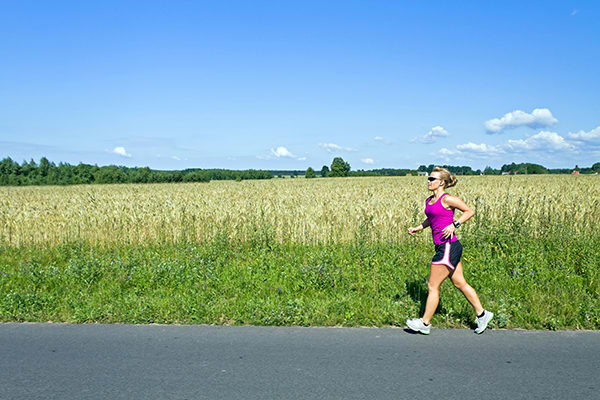
To maximize your results and avoid any aches and pains, there are a few things to keep in mind while you’re walking, says San Francisco running coach Danny Dreyer, author of Chi Walking.
- Keep your chin parallel to the ground; don’t jut your head forward.
- Lift your chest and comfortably draw your shoulders back and down
- Keep your elbows bent 90 degrees, and don’t swing your arms too high or cross them in front of you.
- If you want to increase your walking speed, take smaller steps instead of longer ones.
- Land on your heel with each step. When you land flat-footed, you can cause stress to your knees, ankles, and feet.
Once you’ve made a habit of maintaining good posture and taking brisk strides, you’ll transform your body into a much more efficient walking machine.
Make Sure You’re Walking Properly
There are a few things to keep in mind while you’re walking, says San Francisco running coach Danny Dreyer, author of Chi Walking performance books and DVDs.
To maximize your results and avoid any aches and pains, pay attention to your form:
- Keep your chin parallel to the ground; don’t jut your head forward.
- Lift your chest and comfortably draw your shoulders back and down
- Keep your elbows bent 90 degrees and don’t swing your arms too high or cross them in front of you.
- If you want to increase your walking speed, take smaller steps instead of longer ones.
- Land on your heel with each step forward. When you land flat-footed, you can cause stress to your knees, ankles, and feet.
Once you’ve made a habit of maintaining good posture and taking brisk strides, you’ll transform your body into a much more efficient walking machine — and you’ll burn even more calories.
9 Tips for Walking to Lose Weight
1. Don’t amble
To burn fat effectively, you have to treat walking like a workout, not a relaxed stroll.
Thieme says it’s important to “walk briskly as if you’re late for a connecting flight at the airport.”
2. Wear the right shoes
Walking shoes are specifically designed to handle the heel-to-toe movement of walking, so they’ll have better arch support and more flexibility in the ball of the foot than running shoes do.
Look for comfortable walking shoes that fit well and help support your lower back, hips, and knees while you walk.
Your foot should feel snug and secure in the heel and instep, with enough room to wiggle your toes.
And remember: Your feet will swell a bit when you walk, so don’t tie your laces too tight.
3. Listen to music
If you’re not feeling particularly motivated to walk, make a playlist of your favorite tunes.
Music has the power to boost your energy and keep you entertained — and research has found that listening to music during a workout can help to delay fatigue and increase performance and endurance.
Look for songs with a tempo of about 120 beats per minute — the optimal tempo for syncing with your walking pace.
If making playlists isn’t your thing, consider podcasts, audiobooks, or a walking meditation to keep you motivated during your walking workouts.
4. Add weight to your walks
Kick things up a notch by walking with a weighted backpack.
It’s called “rucking,” and it burns twice as many calories as regular walking, according to the Compendium of Physical Activities.
The military has been doing it for years to help soldiers build endurance and stamina.
Simply add weight (dumbbells or bricks work well) to a daypack, and get walking. Start with a weight equal to 10 percent of your body weight and work your way up from there.
The benefits go beyond calorie burning. The benefits go beyond calorie burning — rucking can also help with postural stability.
5. Walk after your meals
Research has shown the positive effects of even short walks after a meal:
One small study found that people with type 2 diabetes who took a 10-minute walk after their meals had significantly lower blood glucose levels than those who took one 30-minute walk a day.
(Similar results were found in a study that compared three 15-minute post-meal walks with a single 45-minute walk each day.)
And another study found that even slow walks after a meal could help prevent a blood sugar spike after meals in healthy subjects.
6. Embrace hills and stairs
Don’t shy away from a route with a major incline or a trail with staircases.
Walking hills and stairs is a great way to work your quads, calves, and glutes even harder — especially if you pick up the pace as you climb.
If you’re feeling motivated, challenge yourself to power walk (or maybe even jog) up the next hill or set of stairs.
Walk back down, and repeat one or two times before continuing on your walk.
No hills or stairs on your route?
Kick up the intensity with speed intervals — like 60-second bursts of max-effort power-walking followed by 2 minutes of slower walking — to help you burn fat faster.
7. Schedule walking dates with friends
Not only is walking with a friend more fun, but having a workout buddy can increase accountability.
You’re much less likely to bail on exercising if you have someone counting on you to show up at a specific time and place.
8. Try Nordic walking
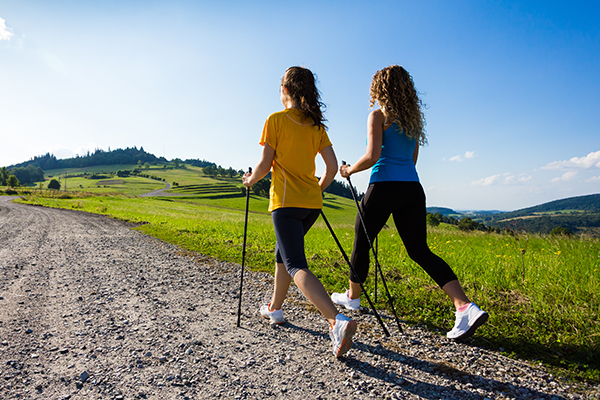
If you’re feeling bored with your regular walks, mix it up with some Nordic walking, which requires the use of special poles designed to help propel you forward.
The poles help you shift some of the workload from your legs to your upper body, which takes some of the pressure off your lower body while helping to strengthen the muscles in your upper body.
9. Pepper your walk with bodyweight challenges
Another way to ramp up your walking workouts: Every quarter-mile, stop and incorporate some bodyweight exercises into your walk (like squats, lunges, or push-ups).
If you can find a bench, do a set of step-ups. If you don’t mind getting your hands dirty, do a set of burpees.
The 10-Second Takeaway
If you’re overweight or new to exercise, walking can be an effective, low-impact option for shedding fat, increasing endurance, boosting cardiovascular fitness, and preparing your body for more intense forms of activity.
But it’s only one part of the weight-loss equation.
To successfully shed fat and keep it off, you also need to make other lifestyle changes, such as dialing in your diet, logging more sleep, and being more active throughout the day.

Yes, walking can help with weight loss — especially if your walks challenge you and you incorporate other healthy lifestyle changes, such as eating more healthfully.